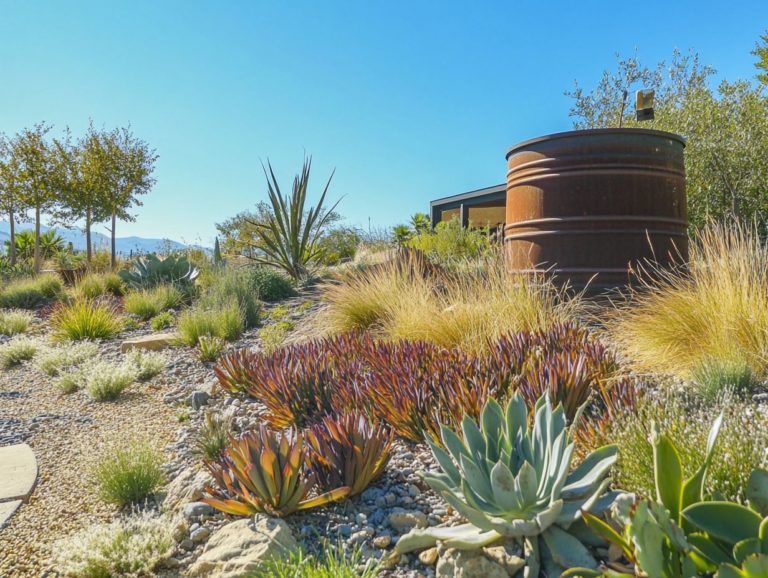Best Practices for Fertilizing Drought Plants
Drought conditions pose a significant challenge for plant growth. They often result in stress and diminished yields. Understanding the impact of drought on plants is important. Proper fertilization empowers you to cultivate healthier and more resilient plants.
This article explores effective fertilization strategies. It guides you in selecting the right fertilizer, mastering optimal application techniques, and discovering alternative methods to enhance drought resistance. By identifying common pitfalls to avoid, you can ensure your plants thrive even in adverse conditions.
Discover the powerful secrets to keep your garden thriving, no matter the odds!
Contents
- Key Takeaways:
- The Effects of Drought on Plants
- Importance of Proper Fertilization
- How to Choose the Best Fertilizer
- When and How to Apply Fertilizer
- Alternative Fertilization Methods for Drought Plants
- Common Mistakes to Avoid
- Frequently Asked Questions
- What are the best practices for fertilizing drought plants?
- Why is choosing a slow-release fertilizer important for drought plants?
- When is the best time to fertilize drought plants?
- What type of fertilizer should I use for drought plants?
- How often should I fertilize drought plants?
- Are there any natural alternatives to chemical fertilizers for drought plants?
Key Takeaways:
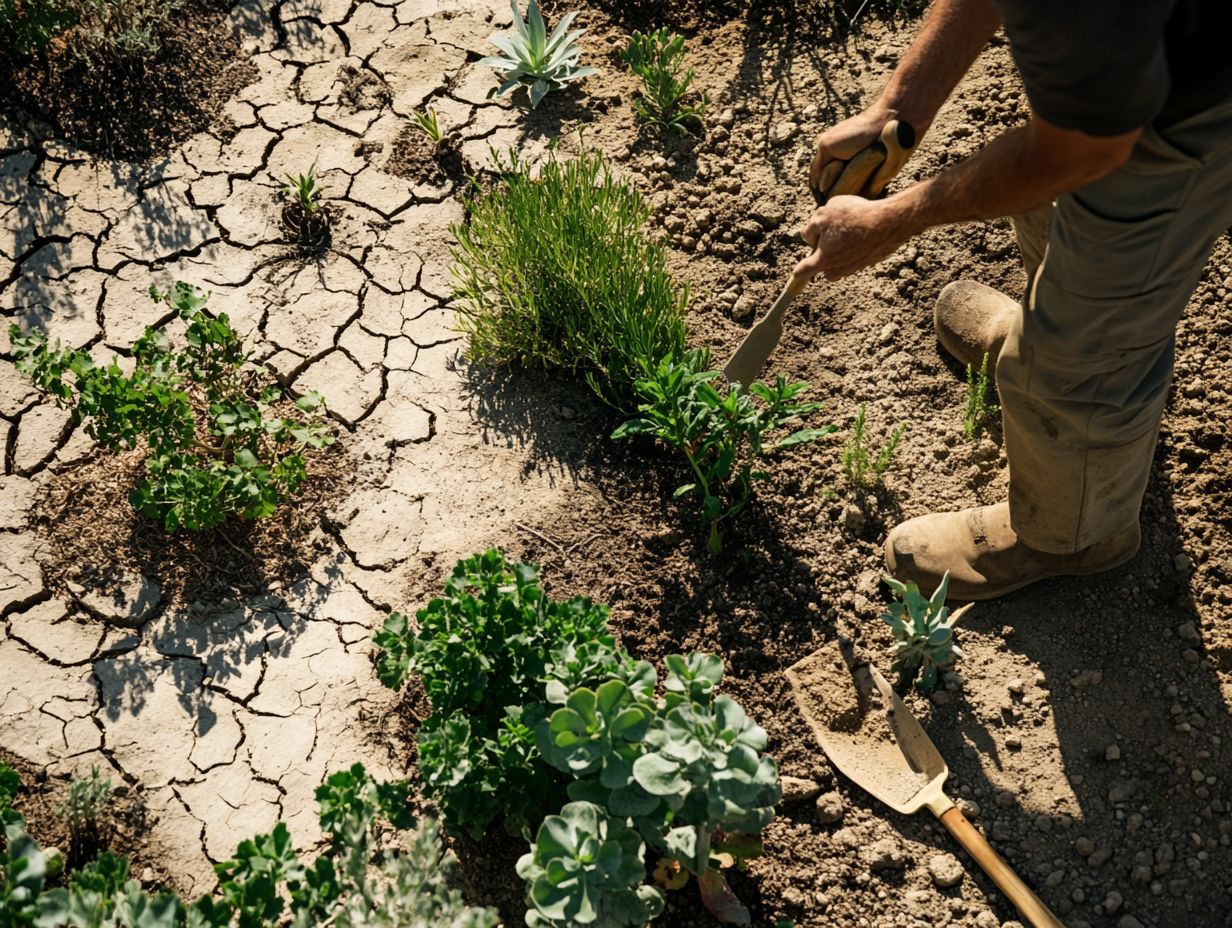
- Understand the effects of drought on plant growth and the importance of proper fertilization to improve drought resistance.
- Choose the right fertilizer by understanding labels and nutrient requirements. Follow best practices for application timing and techniques to ensure optimal results.
- Consider using organic and natural fertilization methods for drought-resistant plants. Avoid common mistakes to ensure healthy and resilient plants.
The Effects of Drought on Plants
Drought can profoundly impact plants. It affects their ability to absorb essential nutrients and ultimately hinders their growth. When water becomes scarce, plants must adapt to survive. This often results in fewer opportunities for flowering and fruiting.
Knowing how drought impacts your plants helps you make better care decisions as a gardener or landscape professional. Drought directly influences your watering practices, soil management strategies, and overall maintenance approaches.
Prolonged drought stress can cause nutrient deficiencies that compromise plant health. It s essential for you to address these challenges proactively.
How Drought Affects Plant Growth
Drought significantly hampers plant growth by limiting water availability, which is essential for nutrient absorption in the root zone.
When water is scarce, you may notice that plants struggle to develop robust root systems. This often results in shallow and inadequate root structures, making it challenging for them to access vital nutrients. Deficiencies can manifest as yellowing leaves or stunted growth.
Take crops like corn and soybeans, for example; they are particularly vulnerable during dry spells. Their extensive root systems may fail to anchor them firmly in the soil, limiting their nutrient intake and compromising their overall stability.
As a result, their vitality diminishes, leaving them more susceptible to diseases and pests. This creates a vicious cycle that can jeopardize both yield and survival, making it essential to address water scarcity in agricultural practices.
Importance of Proper Fertilization
Proper fertilization is crucial for achieving optimal plant growth. It delivers essential nutrients like nitrogen, phosphorus, and potassium, all vital for robust development and flourishing landscapes.
Fertilization significantly contributes to soil health, bolstering the resilience of trees and shrubs. This ensures they can endure environmental stresses such as drought.
By grasping the unique nutrient requirements of different plants and applying tailored fertilization strategies, you can cultivate vibrant growth and abundant flowering while effectively minimizing the risk of nutrient deficiencies.
Boost Your Plants’ Drought Resistance with Fertilization
Fertilization boosts a plant’s drought resistance by providing essential nutrients for strong root systems and overall health during water scarcity. For more information, check out best practices for drought-resistant gardening.
Adequate nutrition is key. Potassium, phosphorus, and magnesium help plants endure long dry spells.
Organic fertilizers like compost and manure provide critical nutrients. They also improve soil structure and water retention.
How to Choose the Best Fertilizer
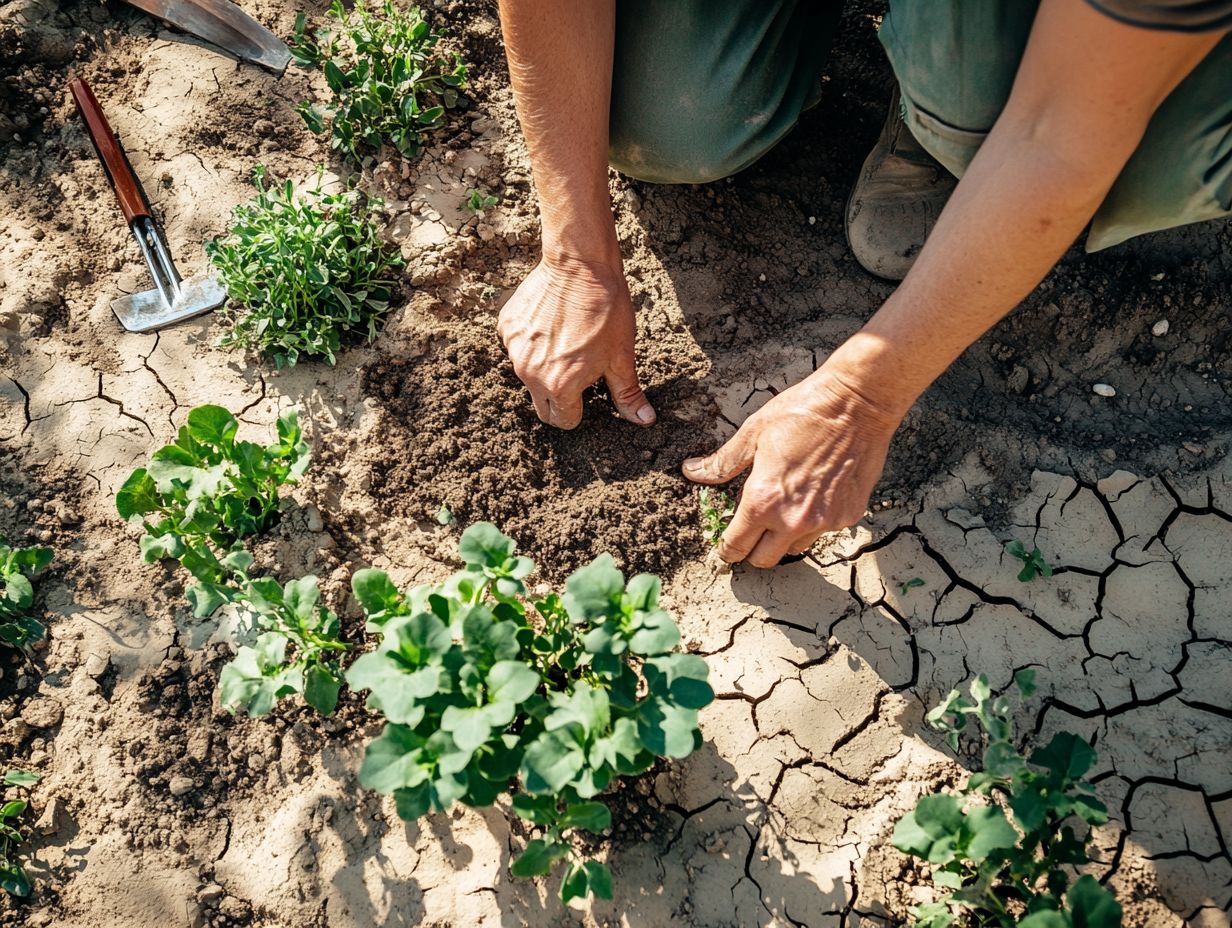
Choosing the right fertilizer is essential for meeting your plants’ nutrient needs. It ensures they get the correct nutrients in the right ratios for optimal growth.
Understanding Fertilizer Labels and Nutrient Requirements
Fertilizer labels help you identify your plants’ specific nutrient needs. They show the ratios of nitrogen, phosphorus, and potassium in the product.
Interpreting these numbers allows you to tailor your fertilization strategies for healthy growth or abundant fruit production. The N-P-K ratio, displayed as three numbers, indicates the percentages of these essential nutrients to guide your choices.
For example, if you’re growing leafy greens, a fertilizer higher in nitrogen is beneficial. In contrast, phosphorus supports root development and encourages blooms in flowering plants.
When and How to Apply Fertilizer
Knowing when and how to apply fertilizer is crucial for nutrient uptake and strong plant growth, particularly when following best practices for garden layout in drought conditions.
Best Practices for Application Timing and Techniques
Implementing best practices for timing and techniques enhances fertilizer use. This ensures your plants get the nutrients they need while minimizing waste, especially when considering essential tips for planting drought-tolerant species.
Consider seasonal factors like soil temperature and moisture, as they greatly influence nutrient uptake. In early spring, applying fertilizers gives your plants a much-needed growth boost. A second application in mid-summer sustains their development.
Watering in fertilizers helps dissolve nutrients, allowing them to penetrate the root system effectively. Managing weeds during these stages reduces competition for nutrients and ensures fertilizers reach their targets, promoting healthier and more vibrant plants.
Alternative Fertilization Methods for Drought Plants
Explore organic fertilization methods for drought-prone plants. These solutions meet nutrient needs and can enhance resilience, especially when paired with best practices for transplanting drought plants.
Nurture your plants with care to help them thrive in challenging conditions.
Organic and Natural Alternatives
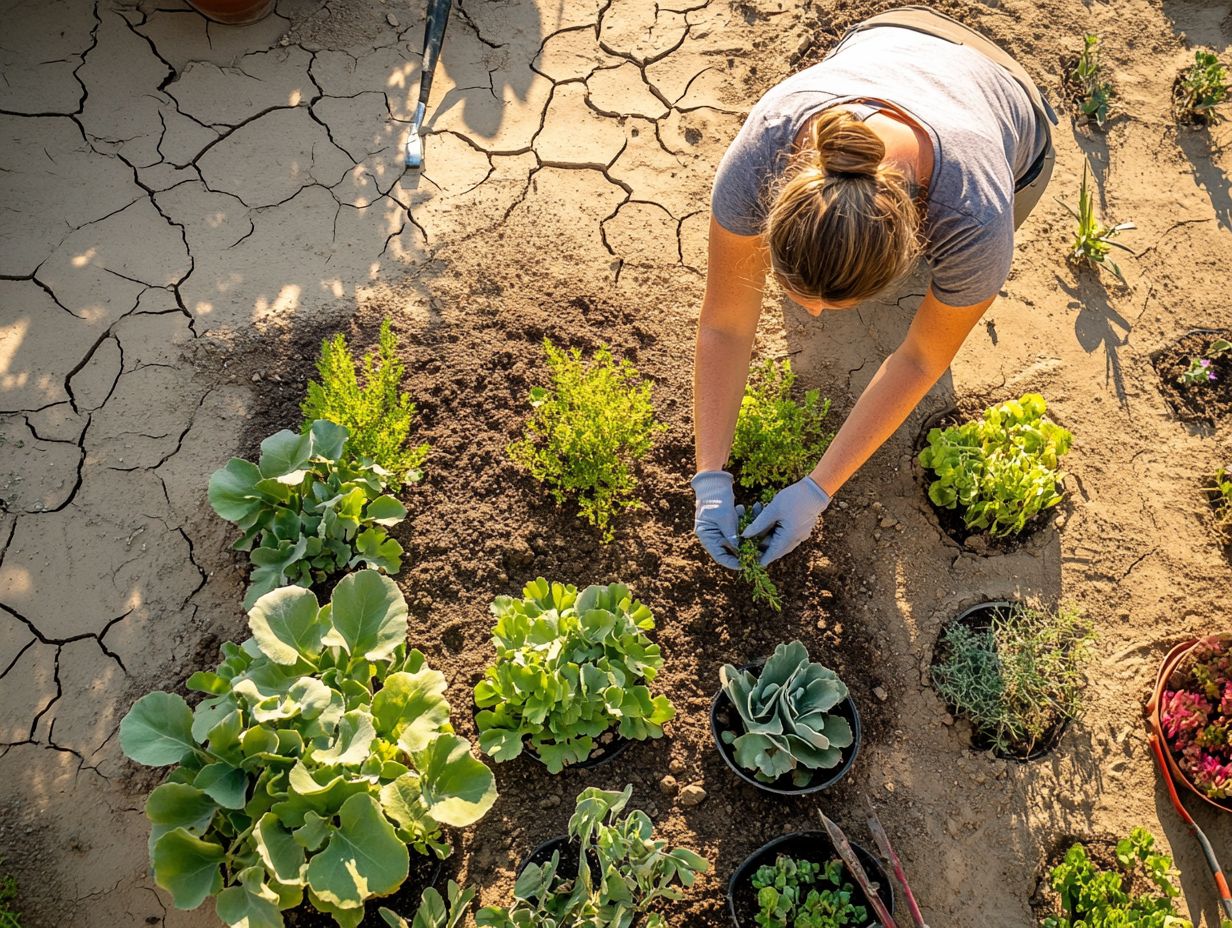
Organic and natural fertilizers serve as exceptional alternatives to synthetic options, offering essential nutrients for your plants while championing sustainable gardening practices.
These fertilizers come in various forms, including compost, manure, and bone meal. Each provides unique advantages that enhance soil quality and fertility. For example, compost enriches your soil with a diverse array of microorganisms that break down organic matter, improving nutrient availability further.
Manure not only delivers essential nutrients but also boosts moisture retention an invaluable benefit during droughts.
Products like seaweed extract or fish emulsion can elevate your plants’ resilience by stimulating root development and enhancing nutrient uptake efficiency. Get ready to cultivate healthier plants that thrive even in challenging environmental conditions while simultaneously reducing your dependence on chemical inputs.
Common Mistakes to Avoid
Avoiding common mistakes in fertilization is essential for maintaining the health of your plants. When fertilizers are applied incorrectly, they can cause nutrient deficiencies, leaf burn (which happens when too many nutrients damage the leaves), and a noticeable decline in vitality.
Ensuring proper application sets the stage for thriving, robust growth.
Fertilization Pitfalls and How to Avoid Them
Understanding fertilization pitfalls, such as nutrient imbalances and improper application techniques, is crucial for maintaining the health of your plants and averting issues like leaf burn.
When these pitfalls arise, the consequences can extend beyond mere physical damage; they can impede your plants’ overall growth and reproductive capabilities. For instance, over-fertilization can lead to an excess of salts in the soil, creating stress for the root system and diminishing the plant’s ability to absorb water effectively.
To navigate these challenges, it’s essential for you, whether you’re a gardener or a farmer, to evaluate the specific nutrient needs of your plants and adjust your fertilization strategies accordingly. Regular soil testing which involves checking the soil’s nutrient levels and pH can offer valuable insights into nutrient availability. This allows you to apply fertilizer more effectively and tailored to the unique needs of your plants.
Frequently Asked Questions
What are the best practices for fertilizing drought plants?
The best practices for fertilizing drought plants include choosing a slow-release fertilizer, applying it in the early morning or evening, and using a balanced fertilizer with equal amounts of nitrogen, phosphorus, and potassium. For effective watering techniques, refer to the best practices for watering drought plants to ensure proper nutrient uptake.
Why is choosing a slow-release fertilizer important for drought plants?
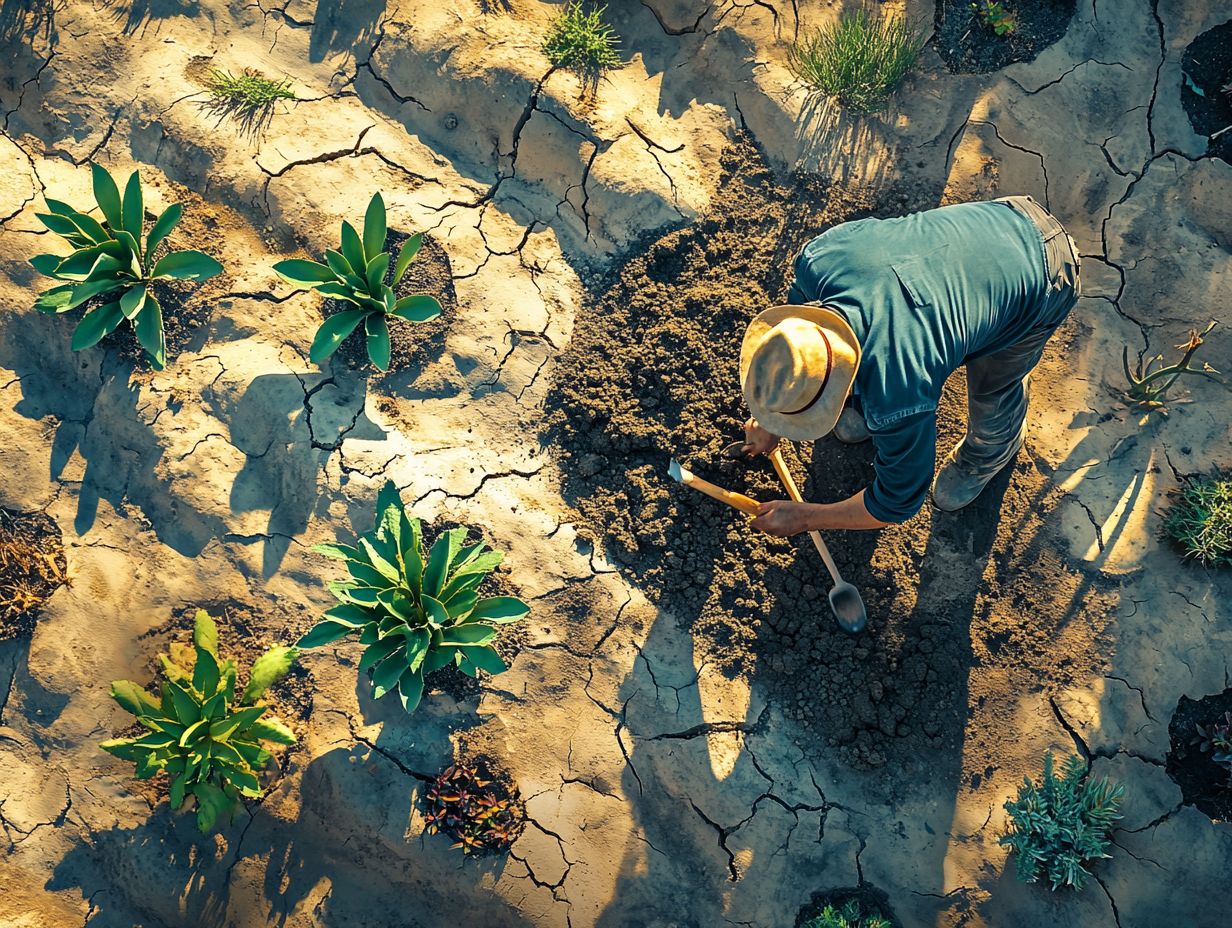
Slow-release fertilizers provide a steady supply of nutrients to drought plants over a longer period, reducing the risk of over-fertilization and nutrient leaching.
When is the best time to fertilize drought plants?
The best time to fertilize drought plants is in the early morning or evening when the temperatures are cooler and the soil is moist. Following the best practices for vertical drought gardening helps plants absorb nutrients better.
What type of fertilizer should I use for drought plants?
A balanced fertilizer with equal amounts of nitrogen, phosphorus, and potassium is recommended for drought plants. Following the best practices for urban drought gardening promotes healthy growth and helps the plants withstand periods of drought.
How often should I fertilize drought plants?
Act fast! Fertilize your drought plants once in the spring and then every 4-6 weeks throughout the growing season. For more effective strategies, check out these tips for maintaining plant health in drought. Always follow the instructions on the fertilizer package and avoid over-fertilizing.
Are there any natural alternatives to chemical fertilizers for drought plants?
Yes, there are natural alternatives to chemical fertilizers such as compost, manure, and organic fertilizers. These can provide the necessary nutrients for drought plants without chemicals and support plant growth in a more environmentally friendly manner.






